One glance at the leaves of whale’s tongue agave (
Agave ovatifolia) and it’s easy to see where its common name comes from. The leaves of this medium-size to large agave are quite wide and form a shallow cup at the tip, adding welcome texture and interest to the landscape throughout the year.
While many agave species produce multiple offsets, or new agave plants alongside the parent plant, whale’s tongue agave doesn’t, which keeps it almost maintenance-free. This Mexican native is a relative newcomer to the landscape trade, making its first appearance in the 1980s. Like most agave species, whale’s tongue thrives in hot, dry climates, including those of California and the Southwest in USDA Zone 7 and above.
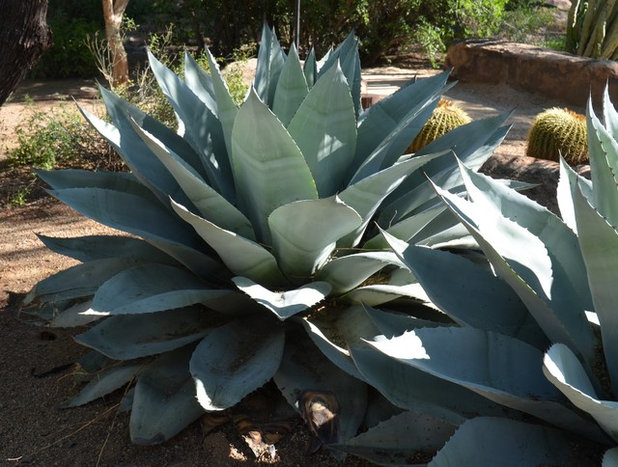
Noelle Johnson Landscape Consulting
Botanical name: Agave ovatifoliaCommon names: Whale’s tongue agave, whale’s tongue hardy century plant
Origin: Native to the Nuevo León region in northeastern Mexico
Where it will grow: Hardy to 0 degrees Fahrenheit, or minus 18 degrees Celsius (USDA Zone 7; find your zone)
Water requirement: Drought tolerant once established, but does best when watered monthly in the summer. In low-desert regions, water twice a month in summer; water in winter only in cases of below-average rainfall.
Light requirement: Full sun; in low-desert regions, filtered shade is best
Mature size: Up to 3 to 4 feet tall and 5 to 6 feet wide
Benefits and tolerances: Drought tolerant
When to plant: Fall or spring
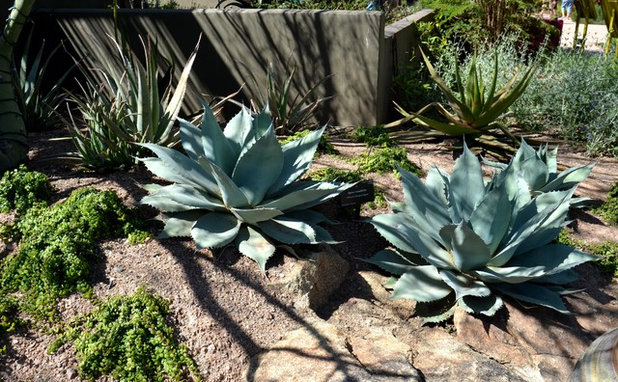
Noelle Johnson Landscape Consulting
Distinguishing traits. The leaves can reach up to 11 inches wide, setting this agave apart from the others. Each leaf is edged with small teeth and ends with a terminal spine that is 1 inch long. The leaves form a shallow cup toward the tip, giving them an attractive curved shape.
There is some variation between the leaves of whale’s tongue agave specimens. Some have a more indented cupped shape at the end of their leaves, while others have more prominent teeth along the leaf margins. Sometimes ridges along the leaf surface appear.
Shown: Two whale’s tongue agave plants growing alongside the trailing succulent elephant bush (
Portulacaria afra) at the Desert Botanical Garden in Phoenix, Arizona
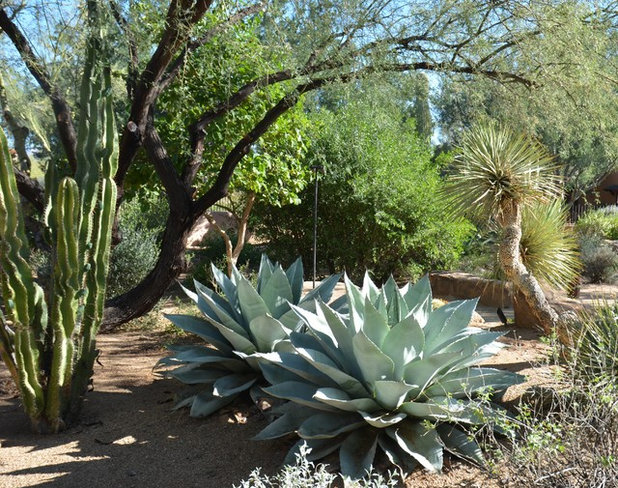
Noelle Johnson Landscape Consulting
While it doesn’t produce offsets, like many agave species, It does reproduce via seed and bulbils, or small bulbs, once it produces its flowering stalk at the end of its life.
The mature size of whale’s tongue agave can vary and is largely dependent on water availability. As a result, those grown in low-desert regions tend to be somewhat smaller than those grown in areas that receive more rainfall, supplemental irrigation or both.
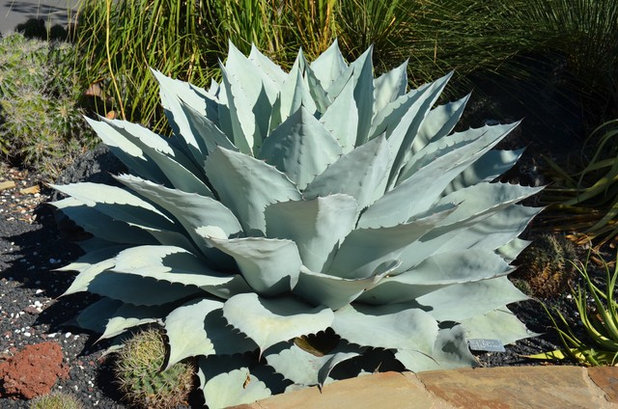
Noelle Johnson Landscape Consulting
How to use it. Whale’s tongue’s size and uniquely shaped leaves allow it to stand on its own as a dramatic accent plant, whether planted next to a large boulder or used as the centerpiece plant in a landscape area.
In large areas, plant in groups of three or more and interplant with lower-growing plants, such as blackfoot daisy (
Melampodium leucanthum), damianita (
Chrysactinia mexicana), firecracker penstemon (
Penstemon eatonii) or purple trailing lantana
(
Lantana montevidensis).
For a contemporary design, plant whale’s tongue agave along with golden barrel cactus (
Echinocactus grusonii) for a dramatic study of contrasting shapes and colors.
Shown: Whale’s tongue agave growing in full sun at the Los Angeles County Arboretum and Botanic Garden
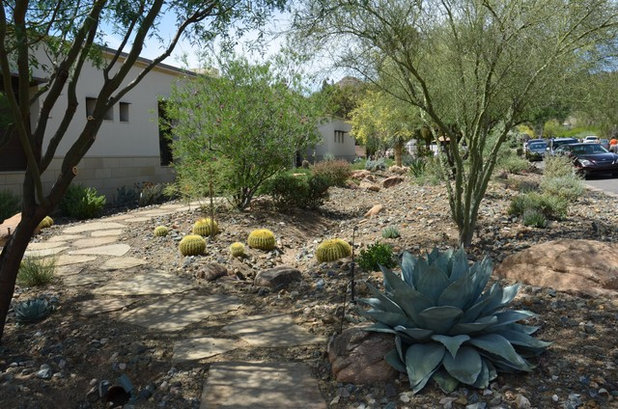
Noelle Johnson Landscape Consulting
Planting notes. The needs of whale’s tongue agave are few, but this plant must have well-drained soil. Plant it in full sun (or filtered shade if you live in low-desert regions).
Shown: Whale’s tongue agave enjoying the filtered shade of a little leaf palo verde (
Parkinsonia microphylla) tree and a mesquite tree (
Prosopis sp.) along with golden barrel cactus planted in the background





